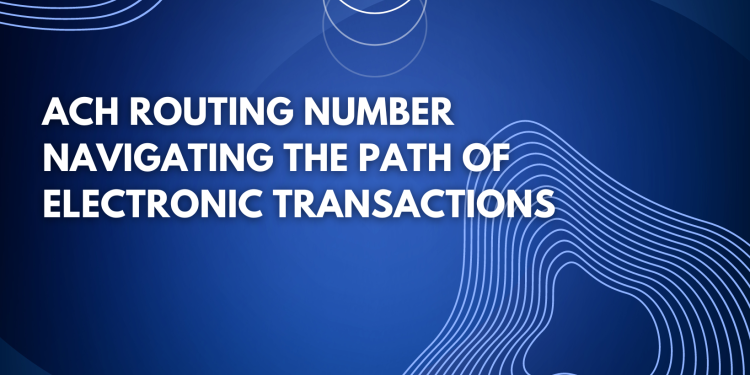In today’s digital age, the speed and convenience of financial transactions have greatly improved. One tool that plays a pivotal role in this process is the ACH routing number. This unique number helps guide electronic money transfers throughout the United States banking system, providing the essential pathway for many transactions.
According to SoFi experts, “The acronym ACH stands for the Automated Clearing House network and enables money to move across a network of thousands of institutions, quickly and securely.”
Understanding the ACH Number
Each financial institution in the United States has a unique nine-digit number known as the ACH (Automated Clearing House) routing number. This number was established by the American Bankers Association (ABA) to ensure the correct routing of electronic payments and direct deposits between banks. It is a vital identifier that helps distinguish one bank from another.
Role of the Routing Number in Electronic Transactions
The routing number is essential in various types of electronic transactions. When you set up a direct deposit for your paycheck, initiate an automatic bill payment, or transfer money between accounts at different banks, the ACH number ensures your money reaches the correct place. It acts as a virtual address for your bank, ensuring that the funds are directed accurately and efficiently.
The significance of the bank routing number comes into focus when the volume of transactions it helps to facilitate is considered. Imagine a vast network of roads. Without signposts or route markers, there would be chaos. The bank routing number acts as those crucial signposts in the banking system, providing a standardized way to route transactions and keep your money moving smoothly.
How to Locate Your ACH Number
Locating your routing number is a straightforward process. You can find it in the bottom left corner of your checks. This sequence of nine digits usually follows your account number and the check number. If you don’t have checks, you can also find them by logging into your online banking account or visiting your bank’s website. Many banks have dedicated sections on their websites that provide information about routing numbers.
It’s worth noting that some financial institutions may have multiple routing numbers depending on the state where you opened your account. Always use the correct bank routing number for your specific banking activities.
Key Differences Between ACH and Wire Transfer Routing Numbers
While the ACH number is used for many electronic transactions, it’s not used for wire transfers. Banks usually have different routing numbers for domestic and international wire transfers. Although formatted in the same nine-digit sequence, wire transfer numbers are not interchangeable with routing numbers.
It’s like using a local map for a cross-country journey – the map isn’t wrong, but it’s not the right tool for the task.
It is essential to understand the function of the bank routing number and how it can significantly improve your efficiency in managing electronic transactions. It may initially seem complex, like learning to navigate a city’s transport system, but once you understand the roadmap, it becomes a vital tool in your financial toolkit. The routing number not only facilitates the swift and accurate transfer of funds but also helps to provide a level of security and traceability in the digital banking world. While it’s one of the less visible aspects of our daily banking activities, the ACH number is undeniably one of the most crucial components in navigating the path of electronic transactions.













